In the exhilarating, four-goal clash between two football powerhouses, Liverpool and Arsenal, tactical brilliance took center stage, captivating fans worldwide. This article delves into a comprehensive tactical analysis of the showdown, dissecting the strategic maneuvers employed by both teams. From formations to player movements, we unravel the intricate chess match that unfolded on the pitch during this highly anticipated fixture. Join us as we explore the tactical dynamics that influenced the outcome of Arsenal vs Liverpool, shedding light on the strategic decisions that shaped the game’s narrative.
Arsenal
Build-up
In the build-up, Arsenal used a 1-4-2-2-2 formation, with Odegaard and Havertz playing as number 10s and Martinelli and Saka playing high and wide, pinning the backline.
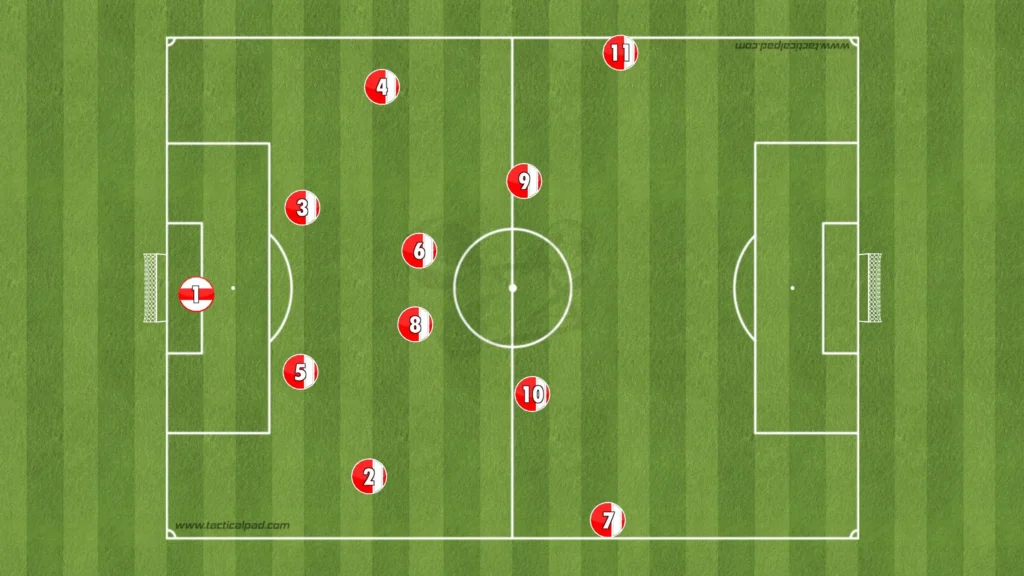
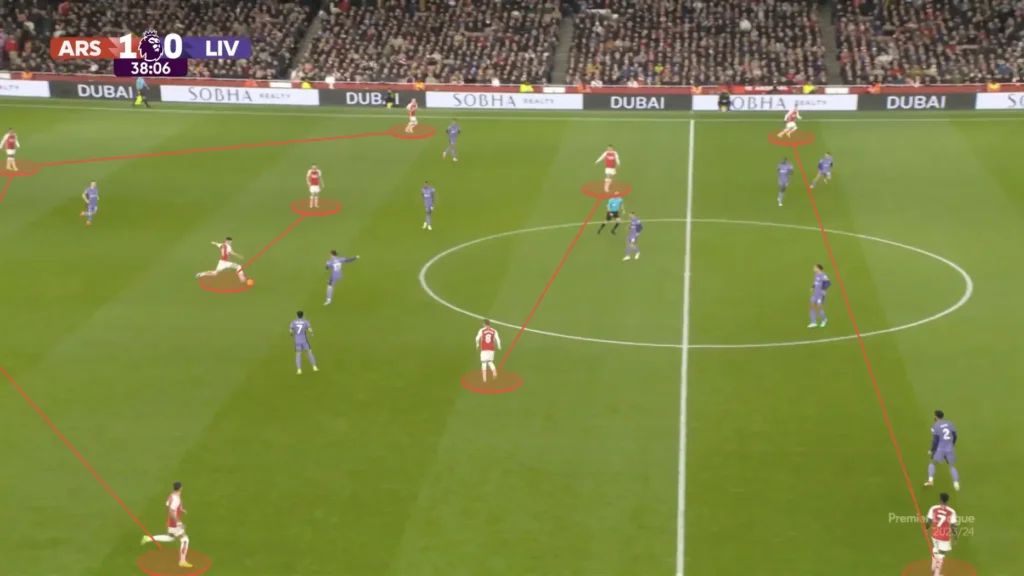
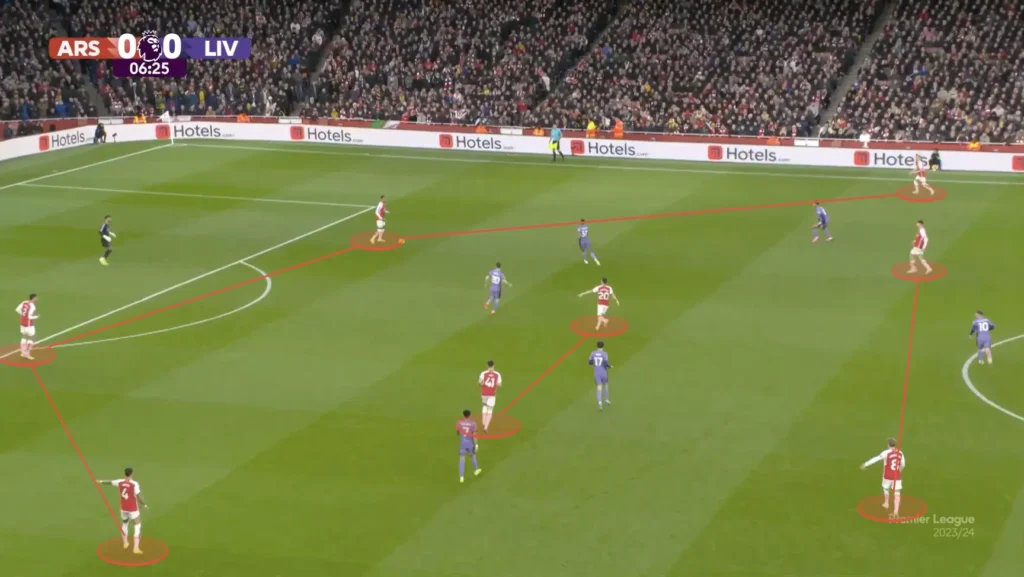
This formation, popularized by Roberto De Zerbi, questions the opposition center-backs, forcing them to make difficult decisions. If they push up on the number 10s, the space behind them opens up, giving the winger a 1v1 against the fullback. However, If they do not push up the number 10s, a numerical superiority gets created in the midfield, allowing Arsenal to play through the press. Arsenal’s first goal comes when they attack this space behind the pressing center-backs.
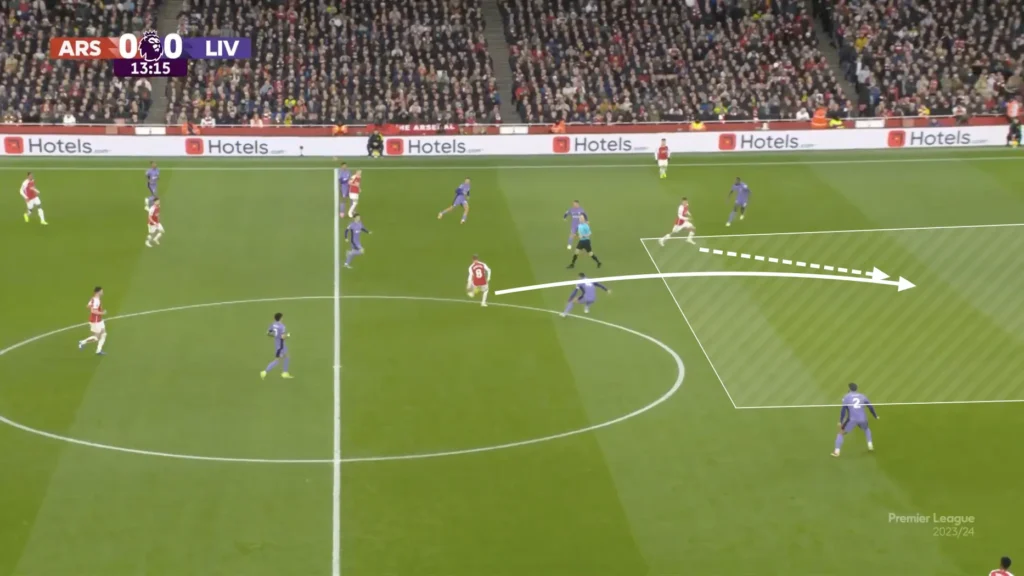
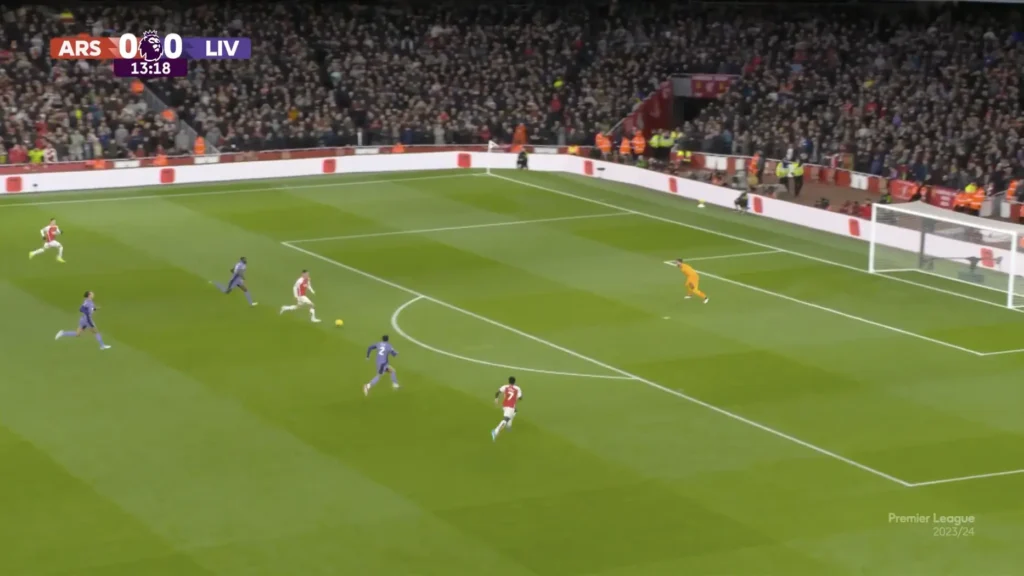
Overlaps
Arsenal often used the overlap to produce opportunities in the final third. When the winger got the ball, the ball-side fullback would quickly make the overlap, creating a 2v1 on the wing. If the Liverpool fullback dropped to cover the overlapping run, the winger would cut inside, taking a shot or combining with a midfielder. If the fullback covered the center, the ball would easily be played to the fullback, creating a crossing opportunity.
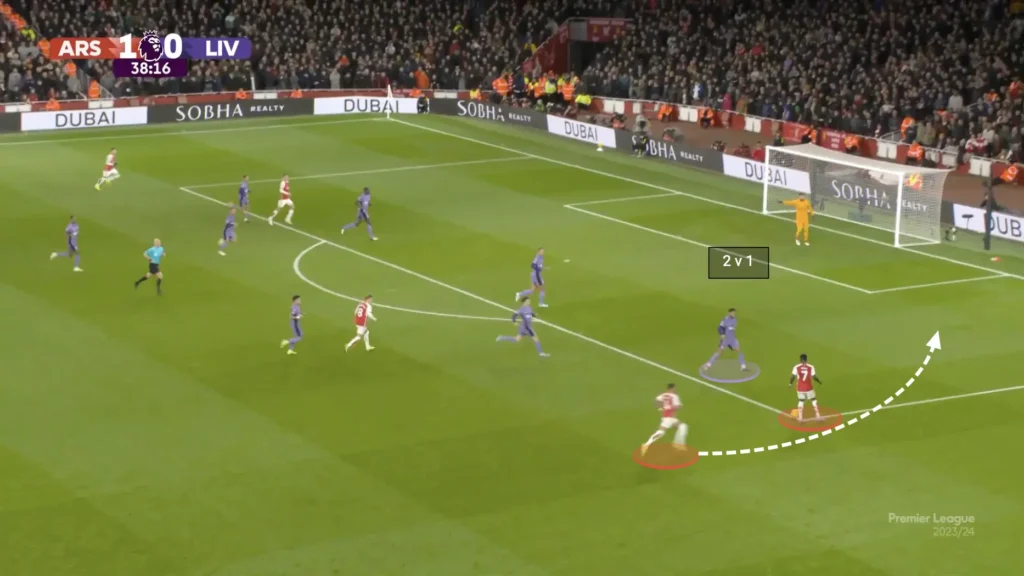
Odegaard in the Pockets
Throughout the game, Arsenal tried to find Havertz and mainly Odegaard in the pockets. Liverpool only having one holding midfielder meant that at least one of them always were free. Arsenal would look for passes from the back, breaking lines, finding Odegaard, who would turn and drive at the defense.

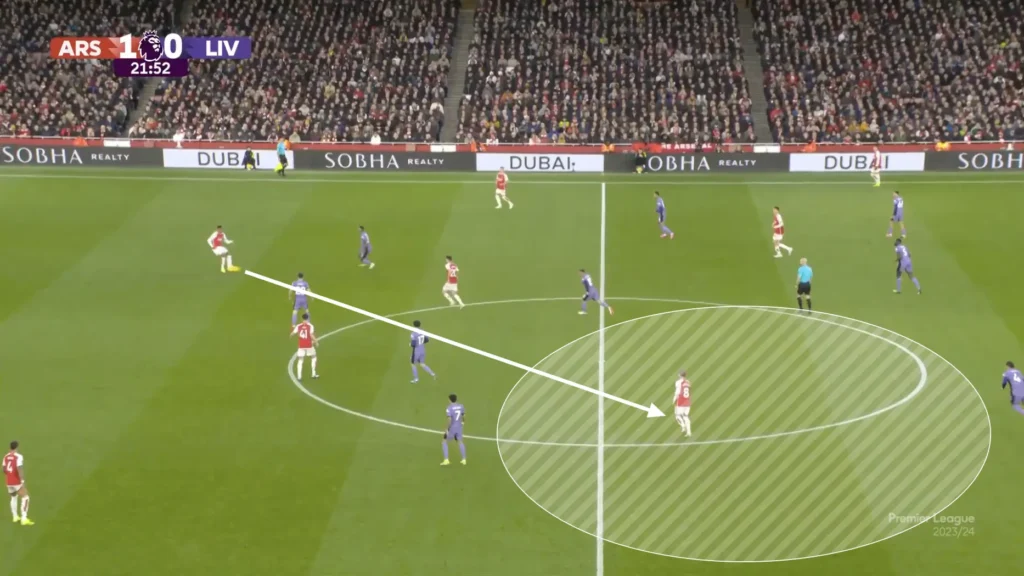
Third-man
One vital tool that Arsenal often applied was the third-man principle. This means using a third player to reach a free player whose passing lane is blocked. Arsenal used this with great success, often beating Liverpool’s defense.
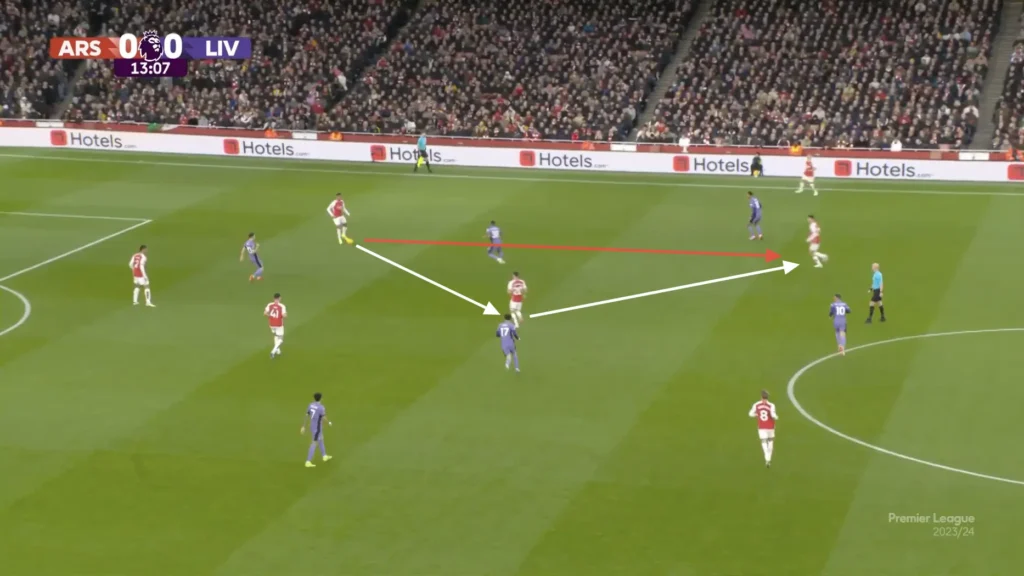
Defending
Low Press
Arsenal used a 1-4-4-2 formation when defending. They looked to set up in a mid-block, always trying to stay compact while closing the center, forcing the opposition out wide.
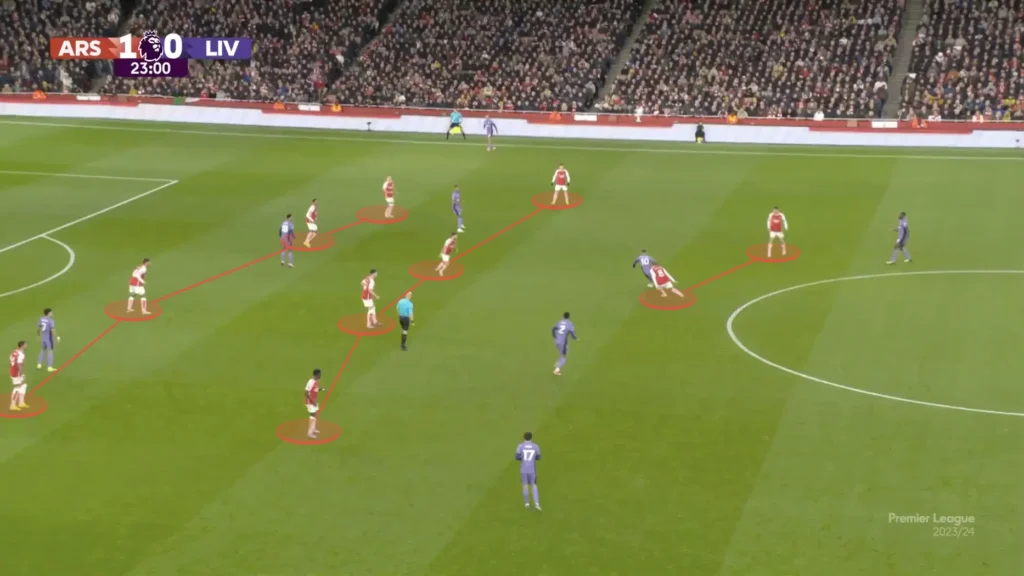
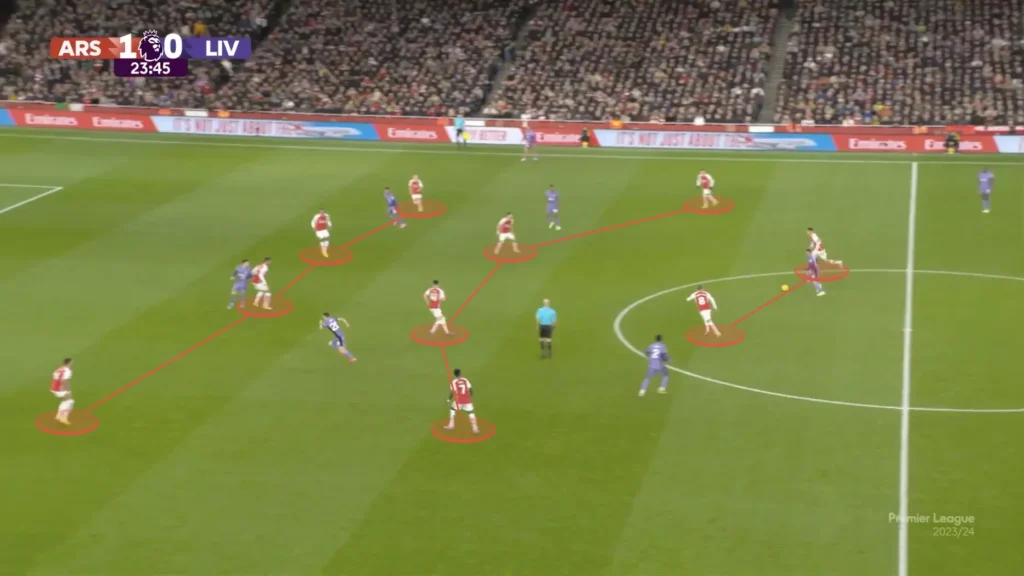
High press
Arsenal looked to press Liverpool whenever they could and did so successfully during the game. They would go into a man-man system and press with high intensity, sometimes winning the ball in dangerous areas:
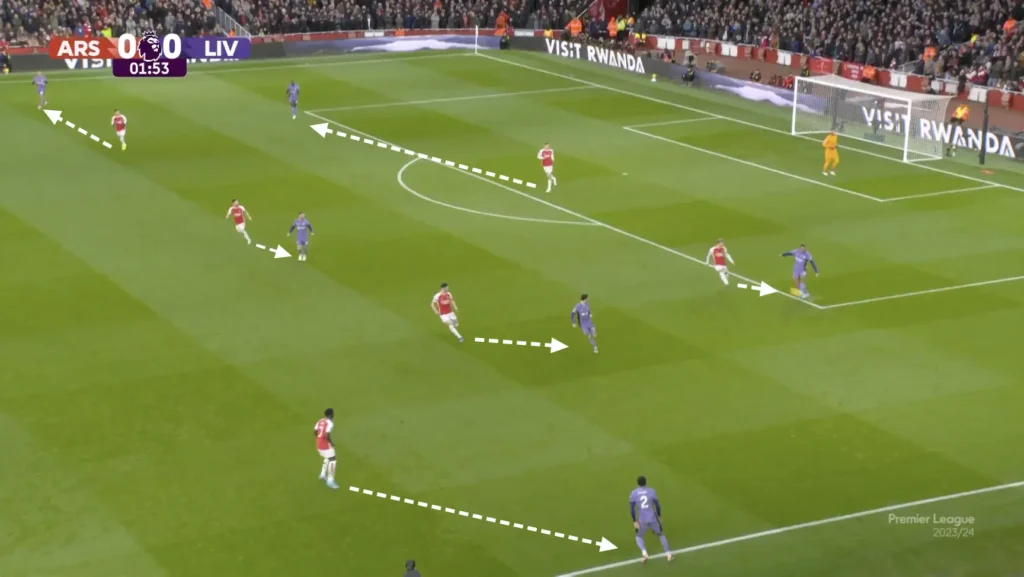
Defensive Transitions
Positioning many players centrally created good conditions for Arsenal in the defensive transitions. They had many players close to the ball after losing possession, which meant many could work together towards regaining possession. Arsenal, therefore, often succeeded in regaining possession directly after losing it, never allowing Liverpool to create counterattacking opportunities.
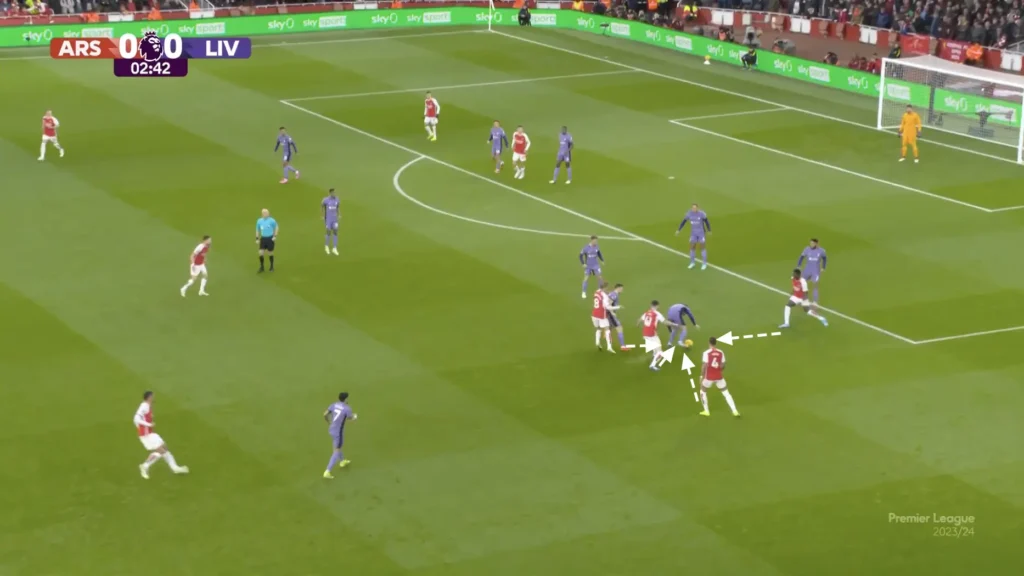
Liverpool
Build-up
Low Build-up
In the low build-up, Liverpool set up in their 1-4-3-3 formation:
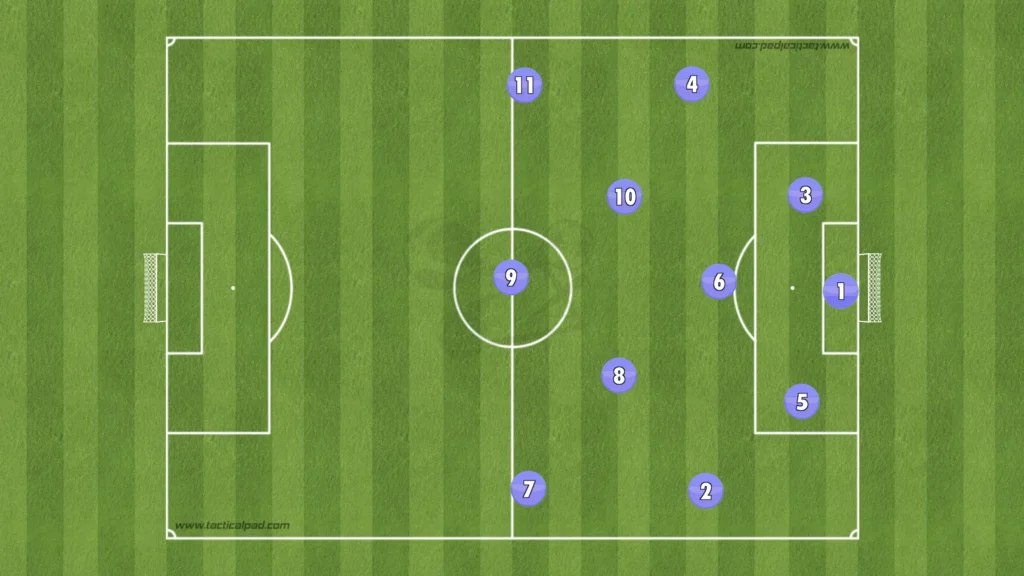
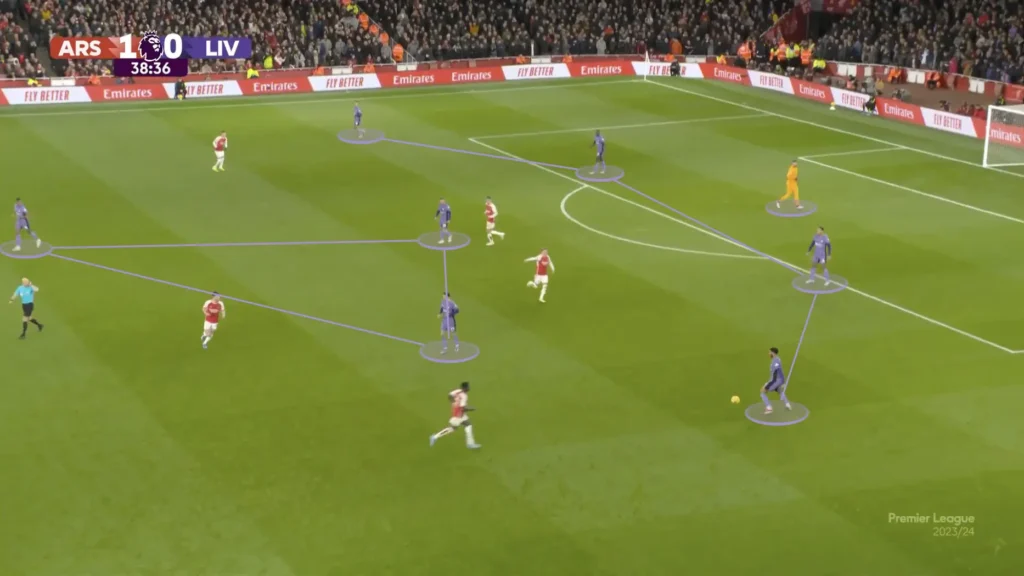
Liverpool were often very direct in their low build-up, not allowing Arsenal to put pressure on them. They would play high and long balls into the forwards, trying to get it down or win the second-balls.
High Build-up
In the high build-up, Liverpool would rotate into a 1-2-2-5-1 formation, pushing the left-back into the defensive midfield, the right-back up on the wing, and the right-winger into the attacking midfield.
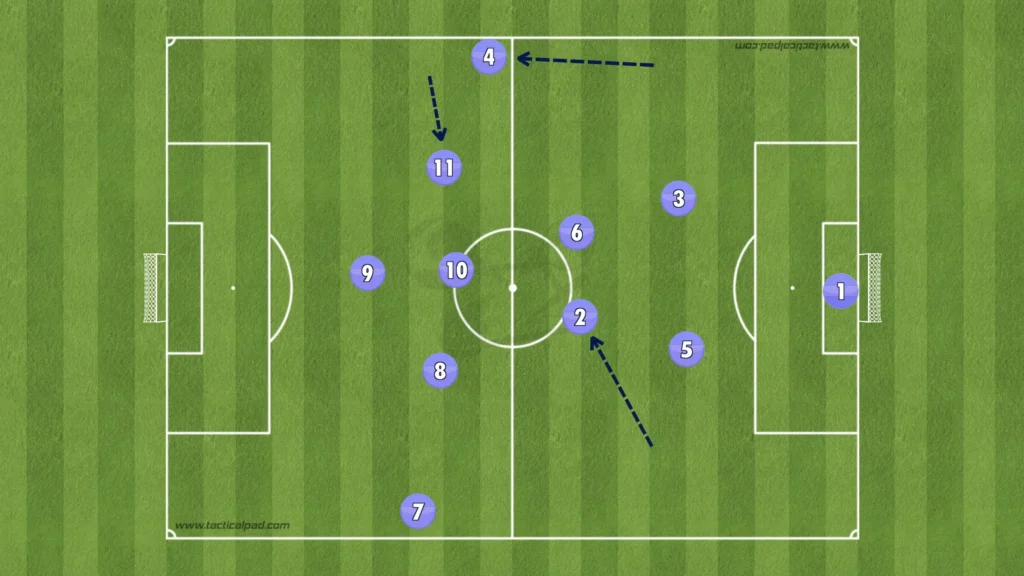
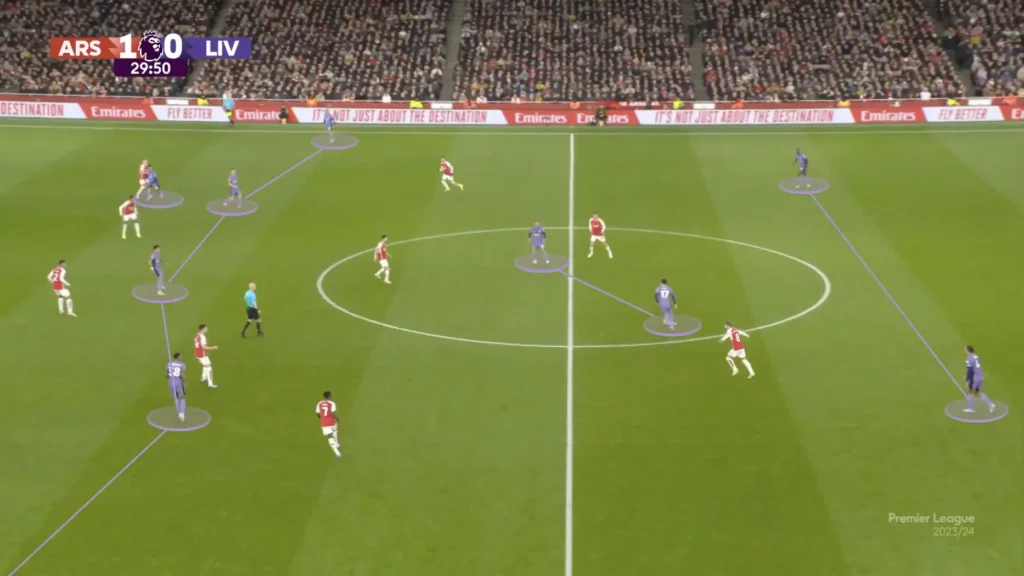
Because Arsenal defended with two forwards, the inverted left-back would sometimes drop back into the backline to turn the formation into a 1-3-1-5-1. This created a three at the back and numerical advantage against Arsenal’s two forwards, which allowed them to beat the line and progress the ball.
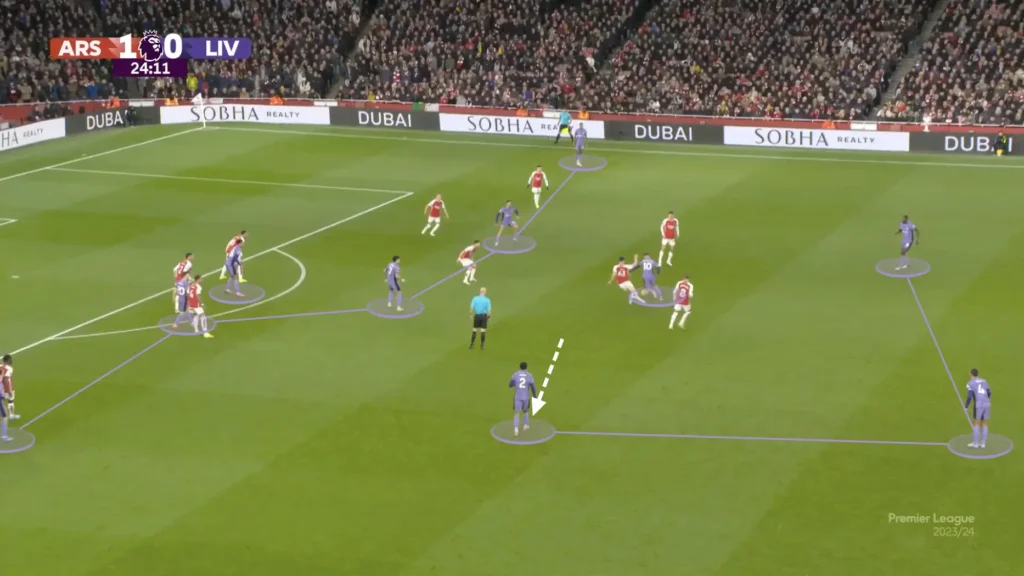
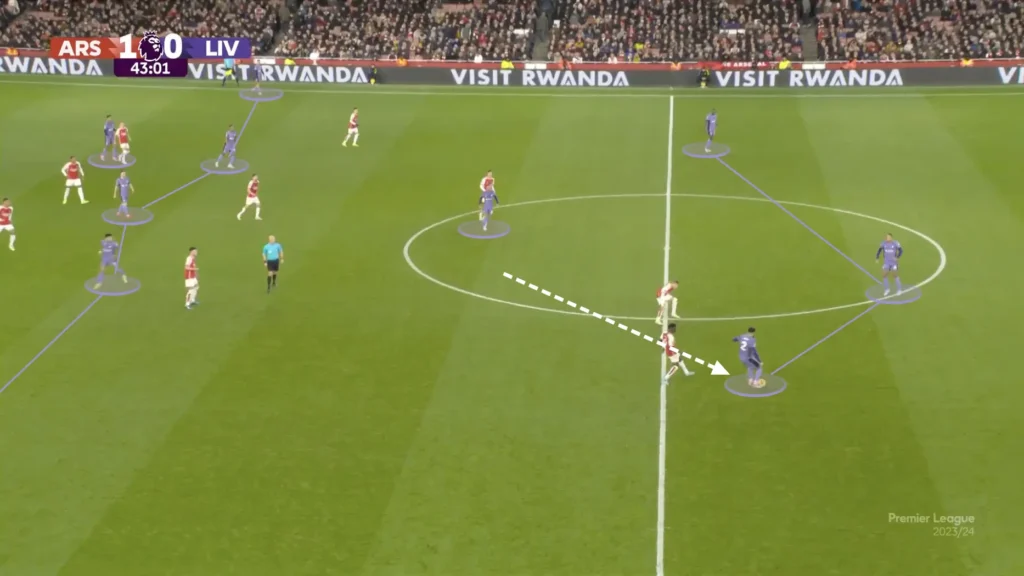
Liverpool would also create a back-three by pushing Alisson up between the center-backs. This produced numerical superiority against Arsenal’s first line while keeping more players higher up the pitch.
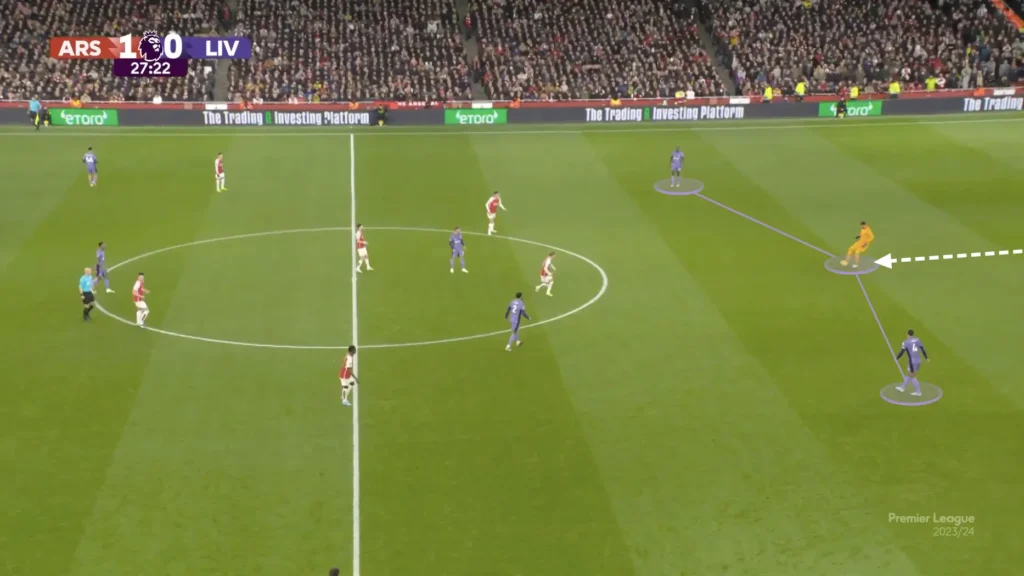
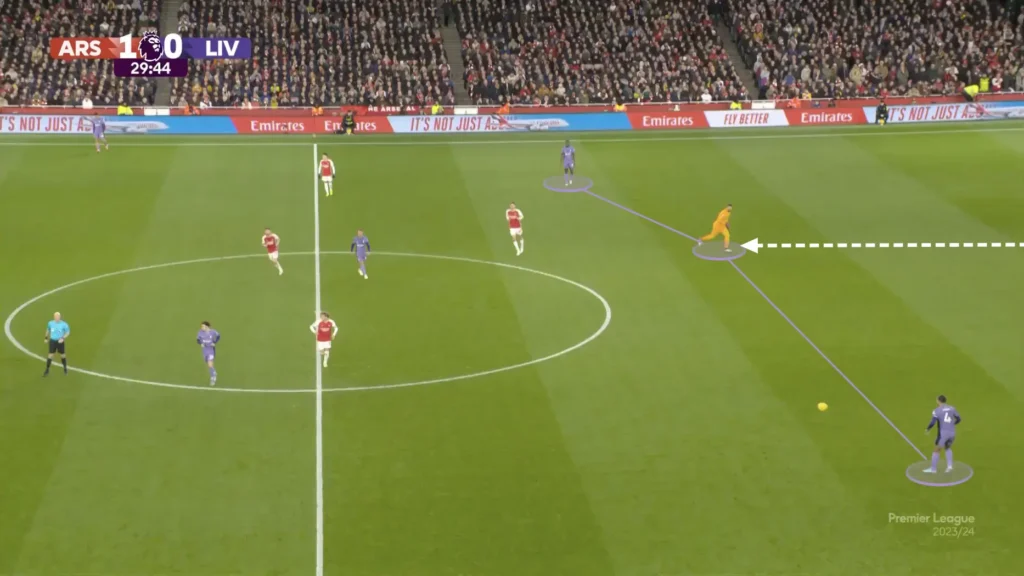
Many Players in the Box
The attacking midfielders also looked to make runs into the box when the ball was in the final third, often getting four or five players into the box, creating an overload. The numerical advantages in the box forced Arsenal to make decisions and leave some players open. Jürgen Klopp also positions many players outside the box, ready for the second-balls and cut-backs.
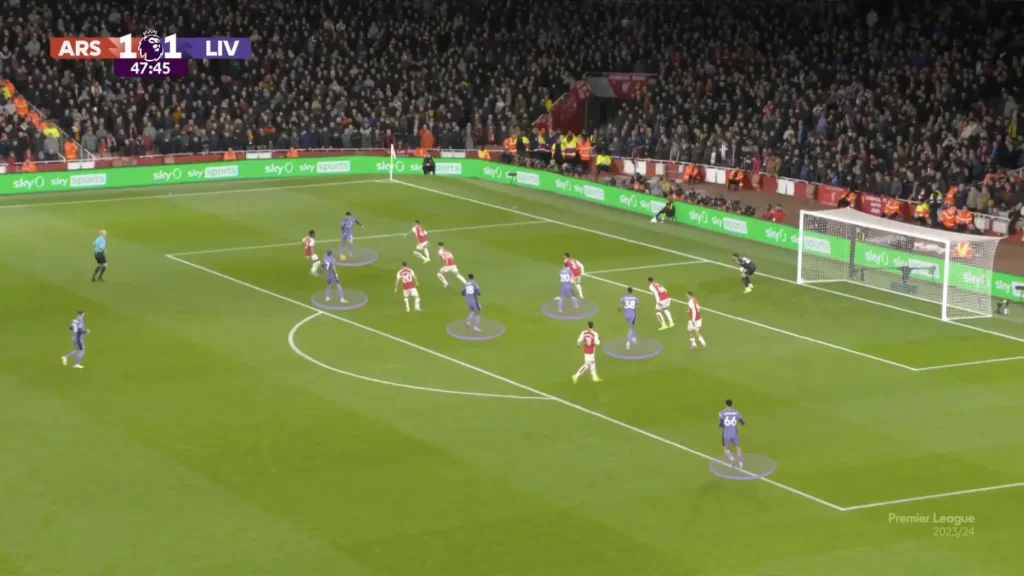
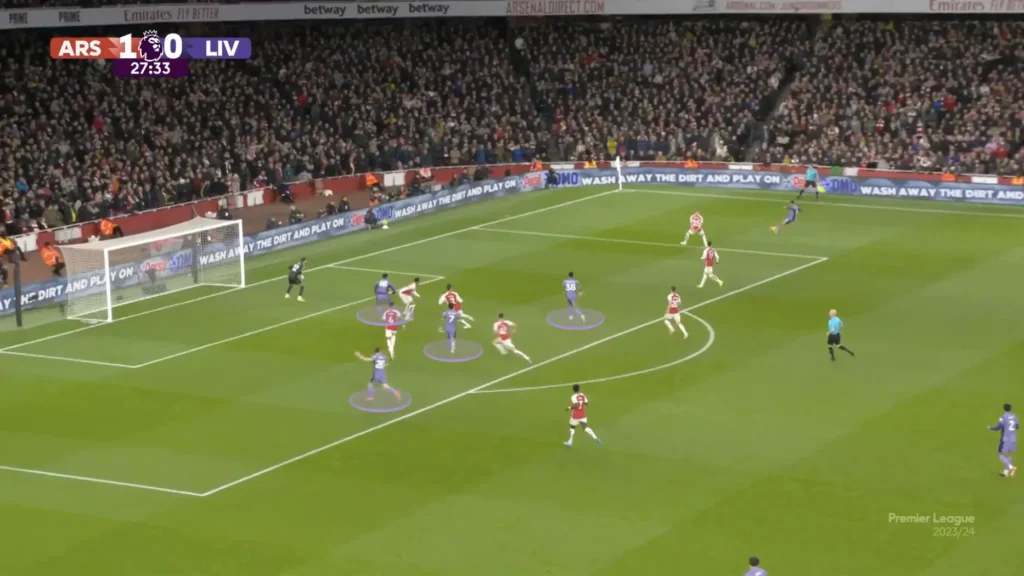
Defending
Low Press
Liverpool used a 1-4-1-4-1 formation in the low press. They looked to set up in a mid-block, always trying to push up when possible.
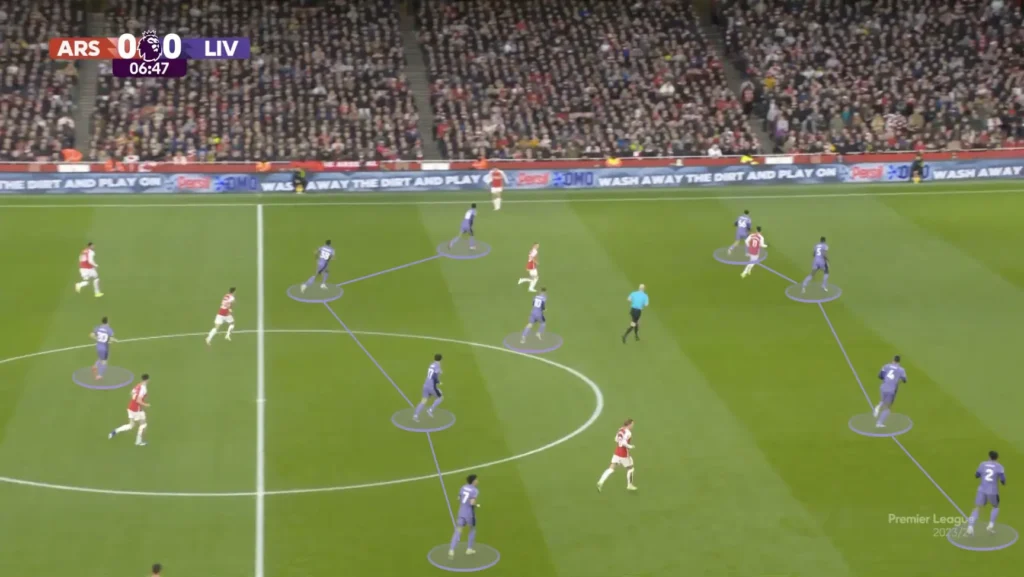
High press
Liverpool looked to press Arsenal whenever they could and did so successfully during the game. They would go into a man-man system and press with high intensity, sometimes winning the ball in dangerous areas:
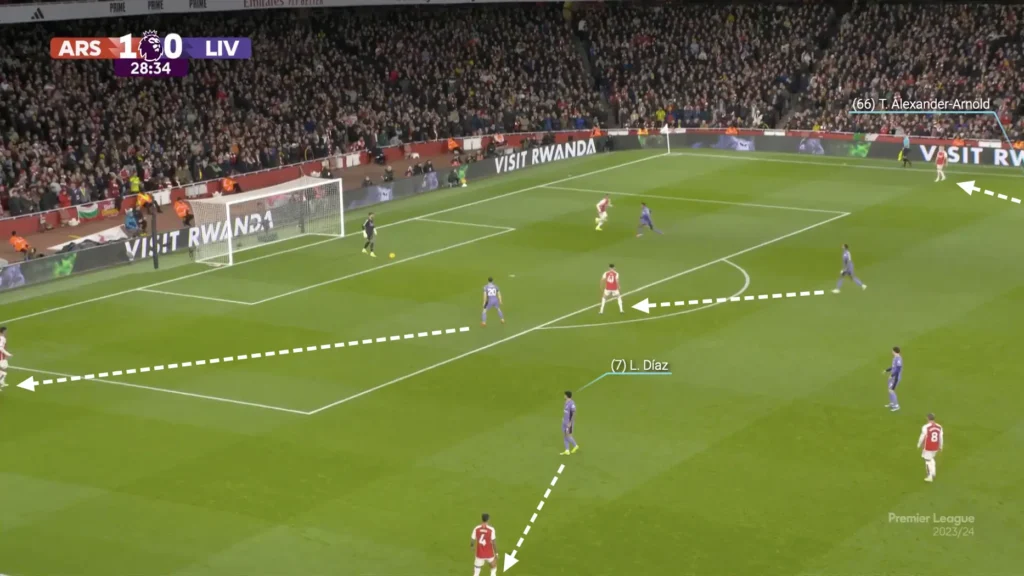
Because of Arsenal’s formation, Liverpool needed to rotate to achieve the man-to-man system. The right-winger would push up on one of the center-backs, the right-back would push up on the left-back, and the right center-back took care of the left-winger, creating the man-to-man high pressing system.
Transitions
Liverpool, like Arsenal, positioned many players centrally in attacks, which created good conditions in defensive transitions. They had many players close to the ball after losing possession, which meant many could work together towards regaining possession. Liverpool, therefore, often succeeded in regaining possession directly after losing it, never allowing Arsenal to create counterattacking opportunities.
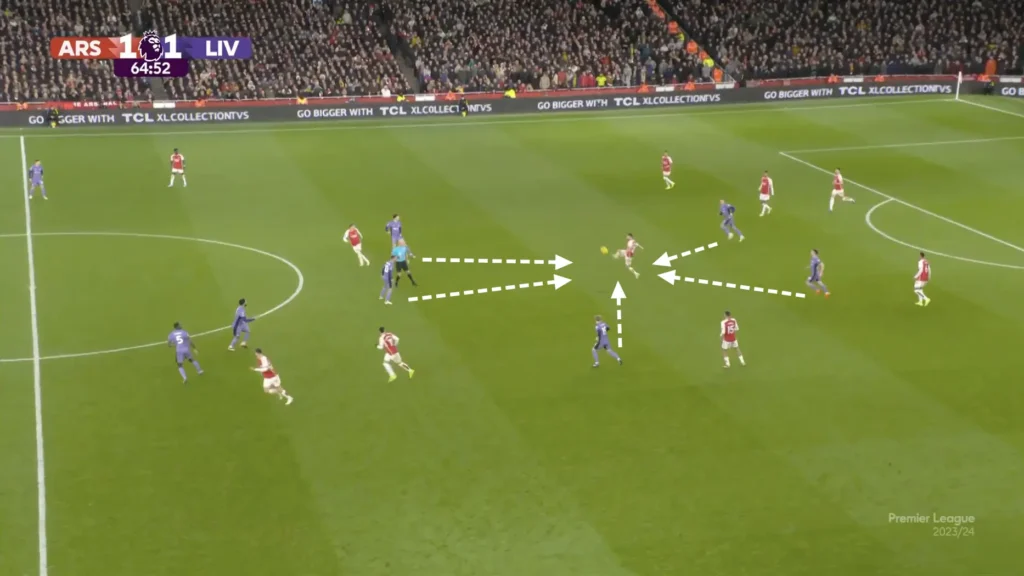
Final Thoughts
In conclusion, the clash between Arsenal and Liverpool showcased a tactical spectacle that kept fans on the edge of their seats. This tactical analysis has delved into the intricacies of both teams’ strategies, highlighting key moments, formations, and player movements that defined the thrilling encounter. Arsenal’s resilient defensive efforts and swift transitions countered Liverpool’s attacking prowess, creating a balance that made the match a compelling spectacle. From build-up structures to defensive organizations, both teams demonstrated their tactical versatility, showing why they are two of the best teams in the world. As the season unfolds, these tactical nuances will undoubtedly play a crucial role in shaping the fortunes of Arsenal and Liverpool, making each encounter a strategic chess match worth dissecting for football enthusiasts and analysts.
